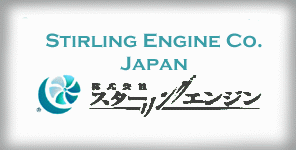| PRESS
ROOM
Our
Story
In 1816, when Scottish
minister Robert Stirling patented the Stirling cycle engine,
he could hardly have foreseen its potential. In his day (before
the advent of the internal combustion engine), the Stirling
engine powered water pumps and household fans. It was reliable,
safe, durable, and easy to use.
Today, the Stirling engine is making
a comeback as a clean alternative to internal combustion engines.
Used in artificial hearts as well as automobiles and NASA
space stations, the Stirling engine is emerging as a darling
of 21st century power design.
Stirling Technology has been at the heart
of this development — since 1983 creating Stirling engines
to power homes and businesses in developing countries. The
highly efficient Stirling doesn’t pollute and can
be fueled by virtually any combustible material, from peanut
husks to natural gas. The key to the Stirling engine is its
rapid heat transfer — instead of using fuel and oxygen
to explode inside pistons, the Stirling engine combusts fuel
outside the engine, then transfers it rapidly inside, where
a rapid heating and cooling cycle moves each piston. To
conserve energy, the Stirling engine has a “heat
sponge” that efficiently stores and recycles
heat.
Today, Stirling Technology has adapted
the rapid heat transfer capability of the Stirling engine
to create the RecoupAerator®, an air cleaner and
air exchanger that truly creates healthy indoor air quality,
quickly and efficiently.
“After years of working with Stirling
engines, the idea began to percolate,” says Catherine
Chagnot, President and CEO of Stirling Technology. Chagnot
had of course tightly insulated her home in the 1970s when
energy conservation concerns peaked in America. As she thought
about her daughter and friends playing in the basement one
winter afternoon in the late 80s, she pondered how she could
introduce fresh air without defeating the energy efficiency
of her house. Concerns about radon, which can seep
into basements and lower levels, were just beginning to surface
in the news.
“Without continuous ventilation,
such as opening a window and placing a fan in it, there is
no fresh air in a home,” says Chagnot. “How could
that be good for any of us? As an engineer, I am used to taking
a problem and solving it. In this case, I had a lot of incentive.”
Chagnot borrowed from her Stirling engine knowledge to create
a household air cleaner that not only introduces fresh,
clean air into the home and exchanges it every two hours
or so, but also maintains indoor air temperature and
automatically adjusts for desired humidity.
Today, the RecoupAerator® is
the best and most efficient energy recovery ventilator (ERV)
on the market. As always, we invite your questions.
Call us any time at 1.800.535.3448.
|








